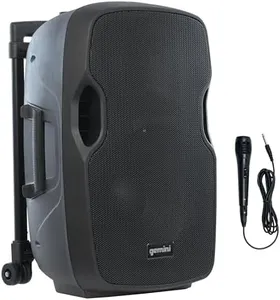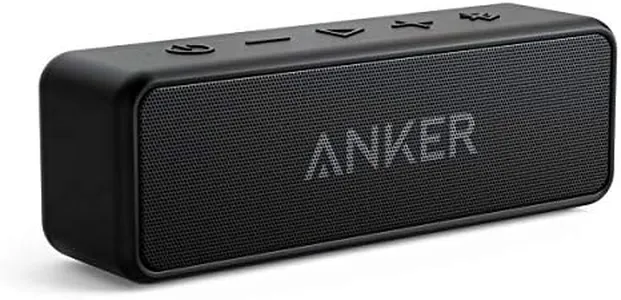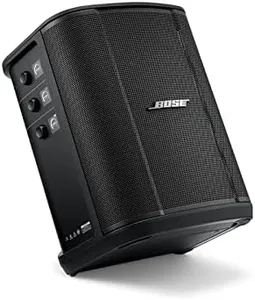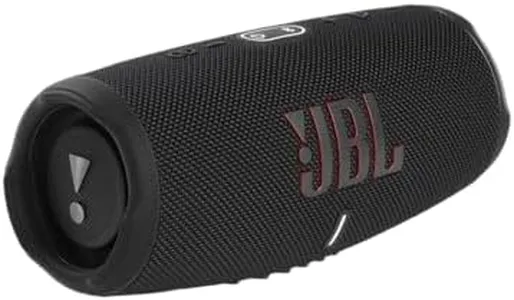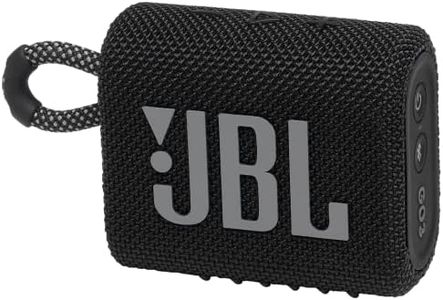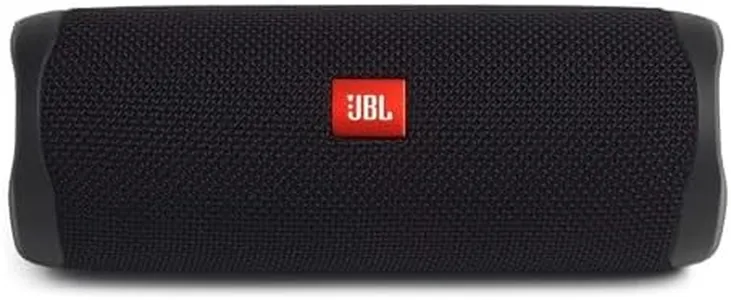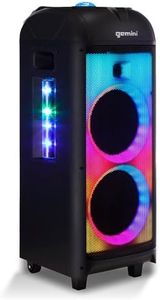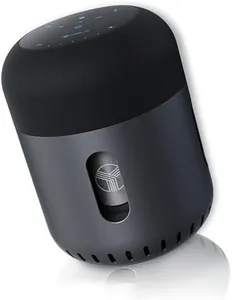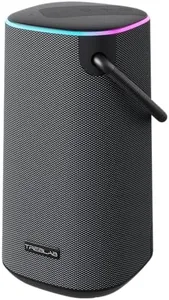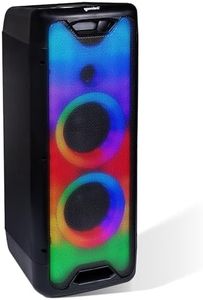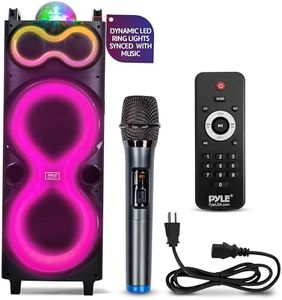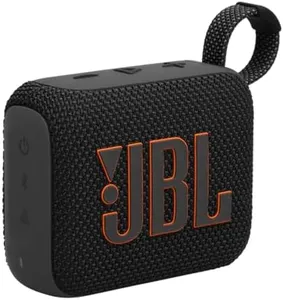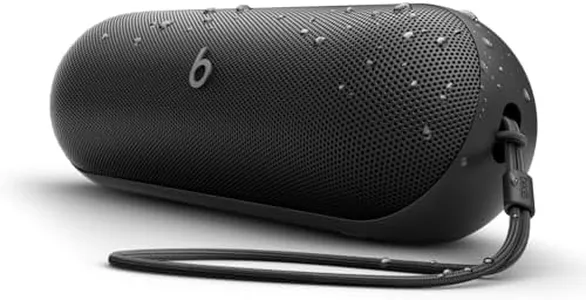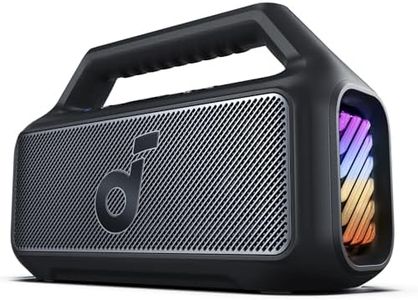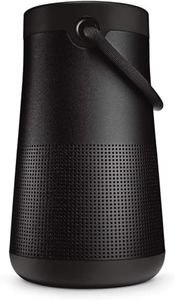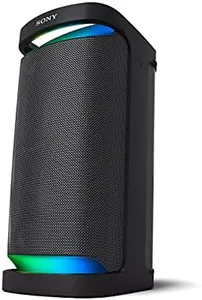10 Best Portable Speakers 2025 in the United States
Our technology thoroughly searches through the online shopping world, reviewing hundreds of sites. We then process and analyze this information, updating in real-time to bring you the latest top-rated products. This way, you always get the best and most current options available.

Our Top Picks
Winner
Anker Soundcore 2 Portable Bluetooth Speaker with IPX7 Waterproof, 24-Hour Playtime, Wireless Stereo Pairing, 12W Stereo Sound, Bluetooth 5, Bassup, Electronics for Home, Shower, Outdoors, Travel
Most important from
130682 reviews
The Anker Soundcore 2 is a portable Bluetooth speaker that offers a blend of impressive sound quality, long battery life, and robust durability. It features 12W stereo sound with enhanced bass thanks to Anker's BassUp technology and dual neodymium drivers. This ensures clear, distortion-free audio even at high volumes, making it suitable for a range of listening environments.
With a 24-hour battery life, the Soundcore 2 is ideal for extended use, whether at home or on the go. The IPX7 waterproof rating adds to its durability, protecting it from rain, spills, and even submersion, making it a reliable companion for outdoor activities and travel. Connectivity is seamless with Bluetooth 5.0, offering a stable connection up to 20 meters. Its compact size and lightweight design (12.6 ounces) make it highly portable.
Additional features like wireless stereo pairing enhance its versatility by allowing you to connect two Soundcore 2 speakers for a more immersive audio experience. It lacks some advanced features such as voice assistant integration or app control, which might be a consideration for some users. Also, while the charging time of 3 hours is reasonable, it might feel lengthy for those needing quick charging solutions. The Anker Soundcore 2 is a great choice for users seeking a durable, high-quality portable speaker for personal audio, home entertainment, and outdoor activities.
Most important from
130682 reviews
Bose S1 Pro+ All-in-one Powered Portable Bluetooth Speaker Wireless PA System, Black
Most important from
803 reviews
The Bose New S1 Pro+ is a versatile and portable Bluetooth speaker that excels as a PA system, making it an excellent choice for musicians, entertainers, or anyone needing sound on the go. One of its standout features is the sound quality; it has an impressive maximum output power of 160 watts, and the Auto EQ adjusts the sound based on its orientation, ensuring great audio no matter how you position it. Battery life is another strong point, with up to 11 hours of playtime, though this can vary according to usage. It’s especially well-suited for indoor performances or backyard parties, thanks to its built-in karaoke feature and Bluetooth streaming capabilities.
Portability is a significant advantage as well; weighing only 14.4 lbs and equipped with an ergonomic carry handle, it’s designed to be easily transported. However, some users might find it a bit heavy for extended carrying. The S1 Pro+ also includes a 3-channel mixer, allowing multiple inputs which enhances its utility for live performances.
While the speaker is durable, it is not waterproof, which may limit its use in certain outdoor conditions or environments. The Bluetooth range is a standard 10 meters, which is sufficient for most uses but could be a limitation in larger spaces. Additionally, the charging time of 5 hours for the lithium-ion battery may not be ideal for quick turnarounds between uses. The cost may also be a consideration for some, as Bose products tend to be on the higher end of the price spectrum. The Bose S1 Pro+ presents a compelling option for those who prioritize sound quality and versatility, particularly in performance settings, while also weighing its portability and charging considerations.
Most important from
803 reviews
JBL CHARGE 5 - Portable Waterproof (IP67) Bluetooth Speaker with Powerbank USB Charge out, 20 hours playtime, JBL Partyboost (Black)
Most important from
31369 reviews
The JBL Charge 5 is a well-rounded portable Bluetooth speaker designed for both indoor and outdoor use. One of its standout features is the impressive sound quality, thanks to the optimized driver, separate tweeter, and dual bass radiators that provide rich audio. Users can expect a fantastic listening experience, even in open spaces.
Battery life is another major strength, offering up to 20 hours of continuous playback. This means you can enjoy your favorite tunes throughout the day, whether you’re at the beach or hosting a backyard party, without worrying about recharging frequently.
Durability is a key feature with its IP67 rating, making it waterproof and dustproof. This allows for worry-free use around water or in dusty environments, making it ideal for outdoor adventures. Connectivity is straightforward; it allows pairing with up to two devices for seamless audio sharing. The PartyBoost feature enables users to connect multiple JBL speakers for a more immersive sound experience, which is great for those looking to enhance their gatherings.
The speaker's size at 8.7 inches in width could be a bit bulky for some, especially if you're looking for something extremely compact to carry around. Additionally, while the sound quality is impressive for its size, it may not deliver the depth and richness of larger, more expensive speakers. Finally, the speaker includes additional features such as built-in power bank capabilities to charge your devices, a USB port, and compatibility with various devices.
Most important from
31369 reviews
Buying Guide for the Best Portable Speakers
When choosing a portable speaker, it's important to consider how and where you plan to use it. Portable speakers come in various sizes, shapes, and with different features, so understanding your needs will help you make the best choice. Think about factors like sound quality, battery life, durability, and connectivity options. By focusing on these key specifications, you can find a portable speaker that fits your lifestyle and preferences.FAQ
Most Popular Categories Right Now
